Music Notes with Names 5 ways to engage student success
Teaching students to read music notes with names successfully can be a rewarding! See 5 ways to encourage and engage students to learn and transfer music note names into their long term memory bank , so they can enjoy this life long skill?
Musicians share a secret language of reading music note names. It’s a skill that has been passed down and refined for nearly as long as music has been around. I remember my parents shared the language of pig latin. When they didn’t want us kids to know what they were talking about, they would just start using “igpay atinlay.” I felt they were trying to hide something from us.
I tried to listen intently and decipher what they were saying. While I could catch a few obvious words here and there, overall I became overwhelmed with no one to show me the way and just quit trying. I’m pretty sure this is how our students might feel when trying to grasp music note names. So we can take them on an adventure and give them the hidden clues for success, then they can start reading, playing and singing the secret language too.
Teach Music Note Names
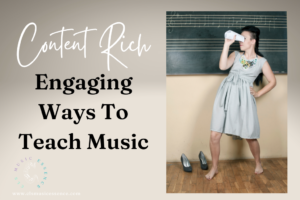
Are you looking for content rich engaging ways to teach music without spending your nights and weekends endlessly lesson planning? Having a go to music game is a great way to teach a lot of content and not have to spend so much time lesson planning. Games keep students engaged and help you teach to the last minute. The best part is games require little to no prep time giving you weekends back. If you are looking for a FREEBIE fun, easy games students love to play with no plan or prep then Click Here Give less and get more from your students. Have your best teaching year yet!

Learn To Read Music Note Names
As a music teacher, I am reminded often how valuable it is to learn to read music note names. Musicians often engage both sides of the brain, solving problems outside the box in creative unique ways, and interact and enjoy a variety of styles through playing or singing. In the classroom young students who learn to read music practice important left to right eye tracking, decode meaning in notation, and develop important learning habits.
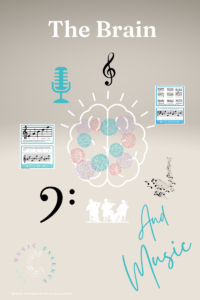
Reading music notes is automatic for me. I’m guessing it’s similar for you. It’s hard to even describe how my brain is deciphering at such a speed. I’m not even sure if I am, but performing a simple experiment of taking the music away proves the point. Suddenly I have no idea what notes to play. To teach students to learn to read music effectively, I took a step back in time. I needed to understand where the students were at in the process, and create edible learning chunks to lead them on a road to success.
Chunking is simply breaking large amounts of information into smaller units. Singing the alphabet is an example of chunking. The first 7 letters A B C D E F G are set to one music phrase from the well known tune, “Twinkle Twinkle Little Star.” Memorizing a phone number is another example of chunking. Before cell phones, the 7 digit phone numbers for home and friends were usually memorized.
It was the combination of kinesthetic dial or touch of the numbers combined with speaking the number in chunks of 3 digits and then 4 that helped make it possible to know many phone numbers by heart. An area code was just 3 digits making this addition to a phone number easy to chunk. The magic memory number to chunk is 7. The brain seems to be able to hold onto 7 digits. Seven is the magic number and more and the information starts to get jumbled up. Thus the kindergarten joke “What letter is lmno?”.
Notes on the Treble Clef
Mnemonics is how most of us made sense to begin reading music note names on the treble clef. The easy one F-A-C-E for spaces on the treble clef is a sure fire way of taking four pieces of information and turning it into 1 bit of information. Then you have either Every Good Boy Does Fine or Deserves Fudge. You can make it relatable and fun by whispering to the girls in the class, “It’s not true. Girls should get the fudge.”
Yet are you like me? Do you sometimes want to pull your hair out when teaching notes on the treble clef because you have said it over and over and they don’t seem to be retaining that connection? Well now we get into short term memory versus long term memory. The long term memory is like a well run library with books neatly arranged on the shelves ready to be referenced, and short term memory is an Etch-A-Sketch. Chances are the Etch-A-Sketch screen shakes and wipes clean as they walk out of the classroom into the hallway.
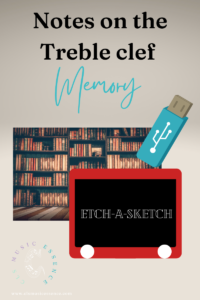
Note Name Practice
To move music note names into the library of long term memory it takes repetition of note name practice. But the key that works is repetition of note name practice that happens in a variety of ways.
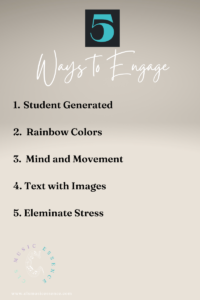
1. Student Generated Mnemonics
Hey mnemonics are our bread and butter for teaching music note name practice. But they work even better when the mnemonic connects to the students’ life. I was just asking a student (I’ll call her Kaelyn) if she has ever seen a meadow full of cows? Kaelyn answered no, and began to tell me about the one cow she saw at a petting zoo.
So the mnemonic All Cows Eat Grass is not something that works for her note name practice just yet. Kaelyn hasn’t seen a meadow full of cows or experienced it. The bottom space “All” of the bass clef just didn’t work. Over and over, Kaelyn wanted to tell me about the one cow, and the cow wasn’t eating grass. Don’t ya love their little stories! It shows how connected they are to what they have experienced. Think, pair, share ideas for mnemonics. A handbell class came up with Every Good Bell Dings Fiercely. Hungry middle schoolers choose Good Burgers Deserve Fries Always. It’s fun to hear what they create, and the best part is they are more likely to remember.
2. Colors of the Rainbow
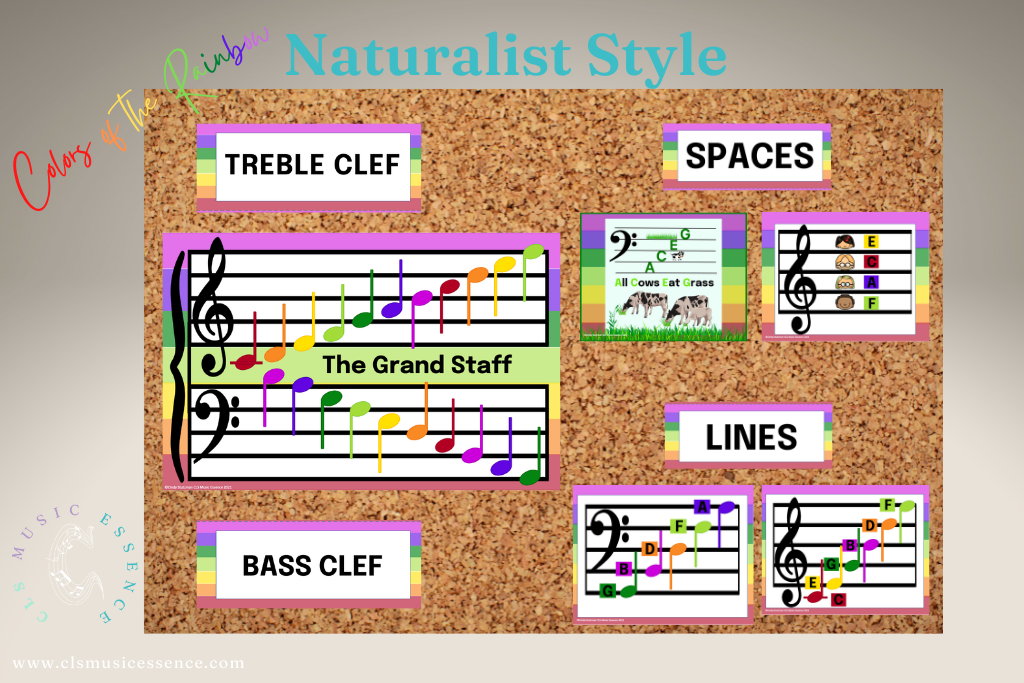
Think about boomwhackers, preschool xylophones, and elementary handbells. They are all set up in order of the colors of the rainbow from red for C to violet for B. The reason rainbow colors are so connective for students has a lot to do with the naturalist style of learning from Gardner’s theory of multiple intelligences. It takes into account our surroundings and what is found in nature. The colors are an added clue to make note name practice both easy and memorable.
Music Staff and Notes
3. Kinesthetics
When you pair the mind with movement, students can read the music staff and notes with greater success. Music class is a great time to use kinesthetics and get the wiggles out, get them up and moving. Create a giant music staff on the floor and let them have fun becoming a note on the staff. Form teams and make the music staff and notes a game. Competition can be a great motivator. You can make it safe for the struggling learner by giving them an extra clue. Hey, maybe the clue is a color. Yea, now we are teaching like a rock star!
4. Pictures
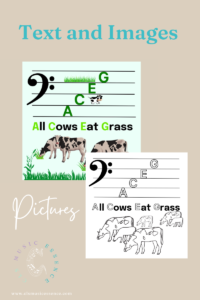
Combining text with images has long been shown to be an effective way to retain a memory. Pictures are engaging and encouraging, but the combined text, or a letter in the case of music staff and music note names, to a memory gives them something they can hold on to. So remember Kaelyn? She needs to see, draw, or color in a picture of cows in a meadow with their heads down eating grass. Then Kaelyn can make a better connection with the mnemonic for the music staff and notes on the bass clef.
Ways to Eliminate Stress when Teaching Music Note Names
5. Eliminate Stress
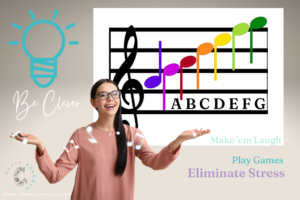
Stress hinders memory so finding ways to eliminate stress and keep it fun and encouraging. If students are practicing an instrument at home and are struggling. I explain it is normal to feel like you are knocking up against a brick wall. When this happens, stop. One way to eliminate stress is to go do something fun! But the secret is to come back and try again. It will seem easier when you take a break.
Ways to eliminate stress in the music classroom is to make it a game and be clever. Give them little light bulb moments. Try pointing out that the staff is just the 7 letters in alphabetical order and then start over again at A? 💡It is so fun to see the lightbulb moment happen. You would think this is obvious. Yet, this clever little bit of information is helpful to students to make a connection.
Finally get them to laugh! Laughing is one of the great ways to eliminate stress. I like to pretend my hand is a claw coming at your F-A-C-E to have a playful fun way of helping students remember the notes on the spaces, and end the class by going into story time mode, so they won’t shake the Etch-a-Sketch when they leave.
I begin the narrative by telling them, “you are lying in bed going over the music notes before falling asleep.” Then add in some fun stuff like “because you just love music class so much and you can’t wait to show [Miss/Mrs. Melody or Mr. Riff] how awesome you are at reading music notes. Just before you fall asleep you are thinking about notes on the treble clef spaces. Suddenly a giant claw is coming towards your F-A-C-E!” Yikes everyone laughs on cue. “Have a great day! Music teachers are the Best!”
Managing Stress For Teachers
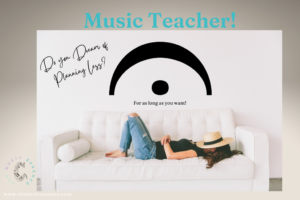
Managing stress for teachers means time to relax, refresh, and recharge! Having a go to music game is a great way to teach a lot of content and not have to spend so much time lesson planning. Games keep students engaged and help you teach to the last minute. The best part is games require little to no prep time giving you weekends back. If you are looking for a FREEBIE fun, easy game students love to play with no plan or prep then Click Here. Give less and get more from your students. Have your best teaching year yet!
Related Products :
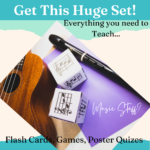
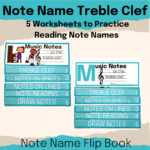
Related Articles
In The Brain 7 is a Magic Number
Musicians use both sides of their brains more frequently than average people

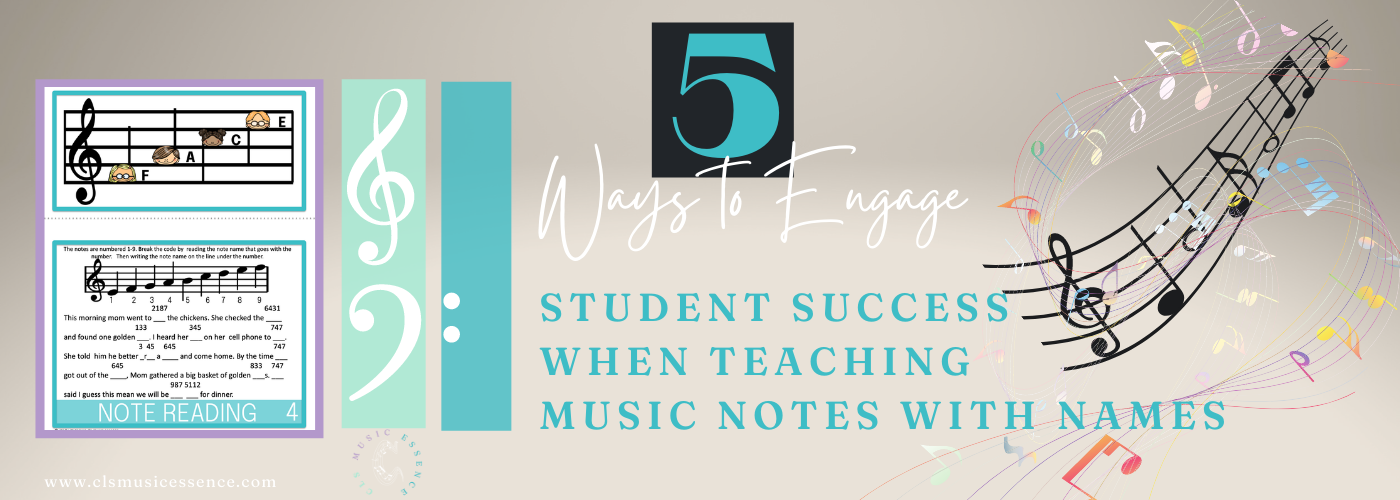
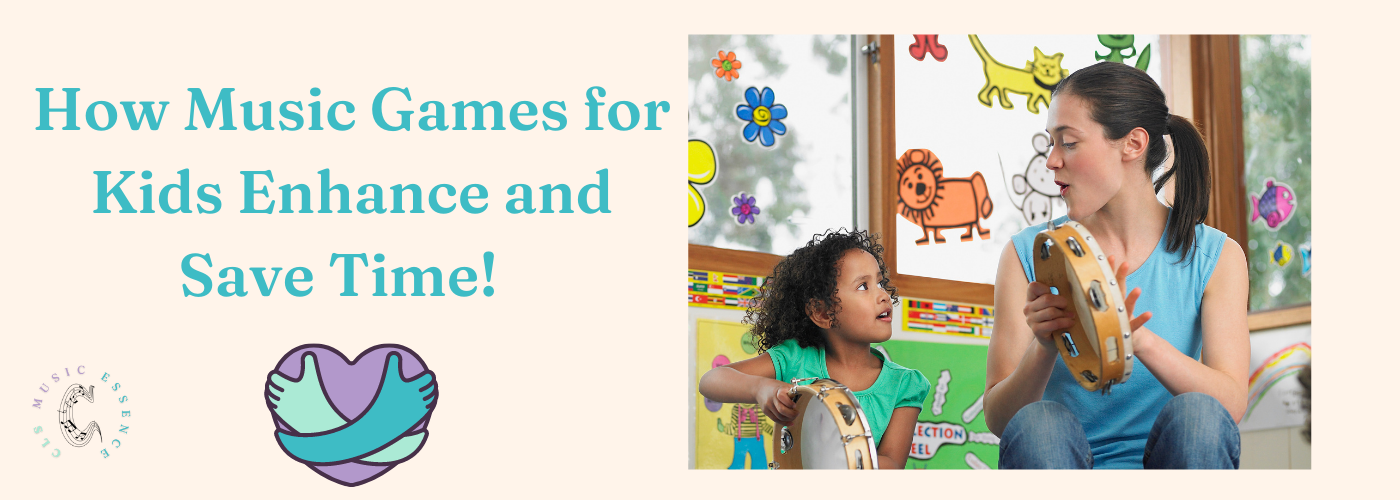
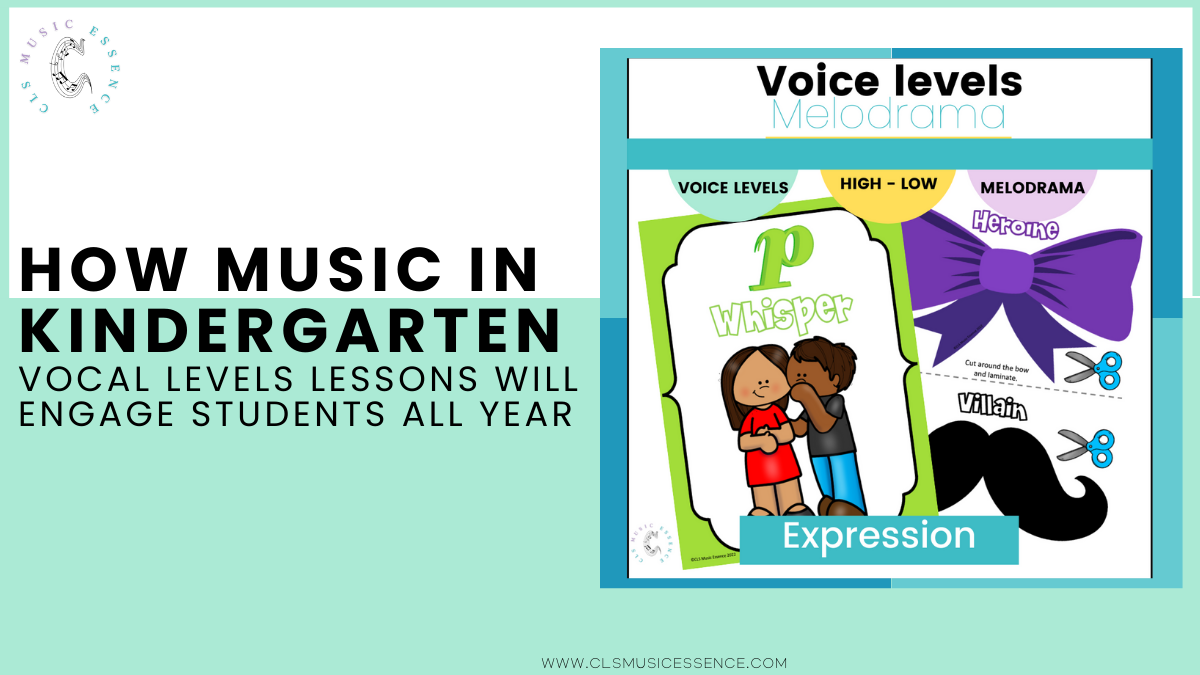
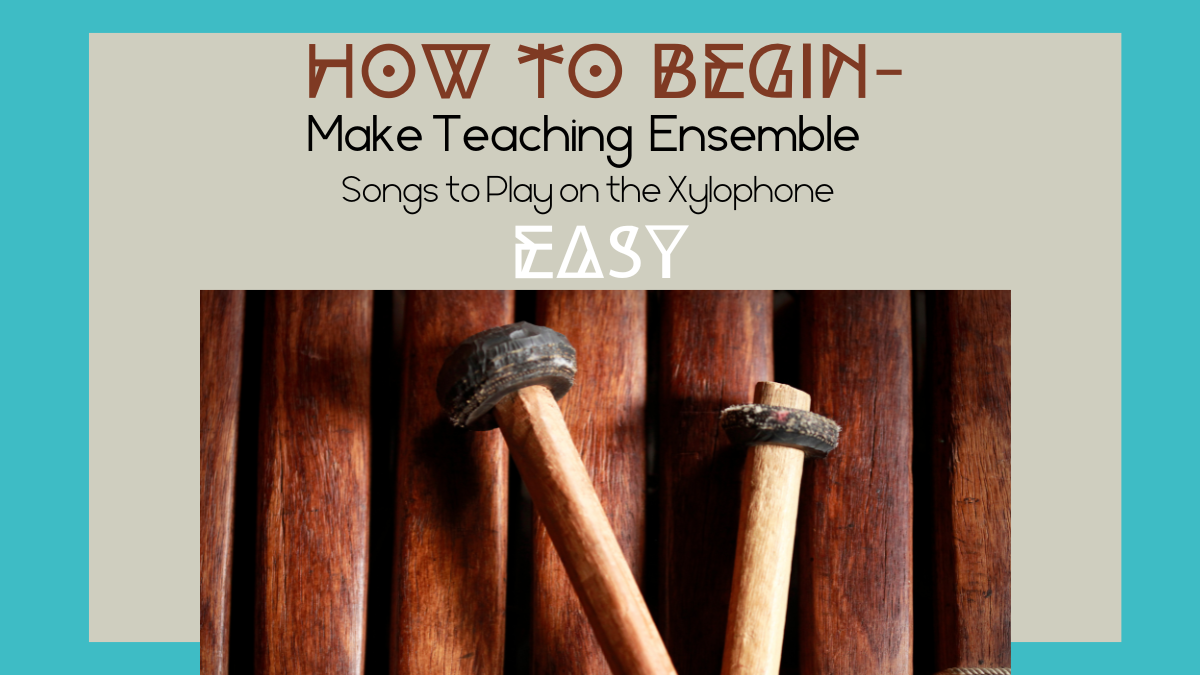
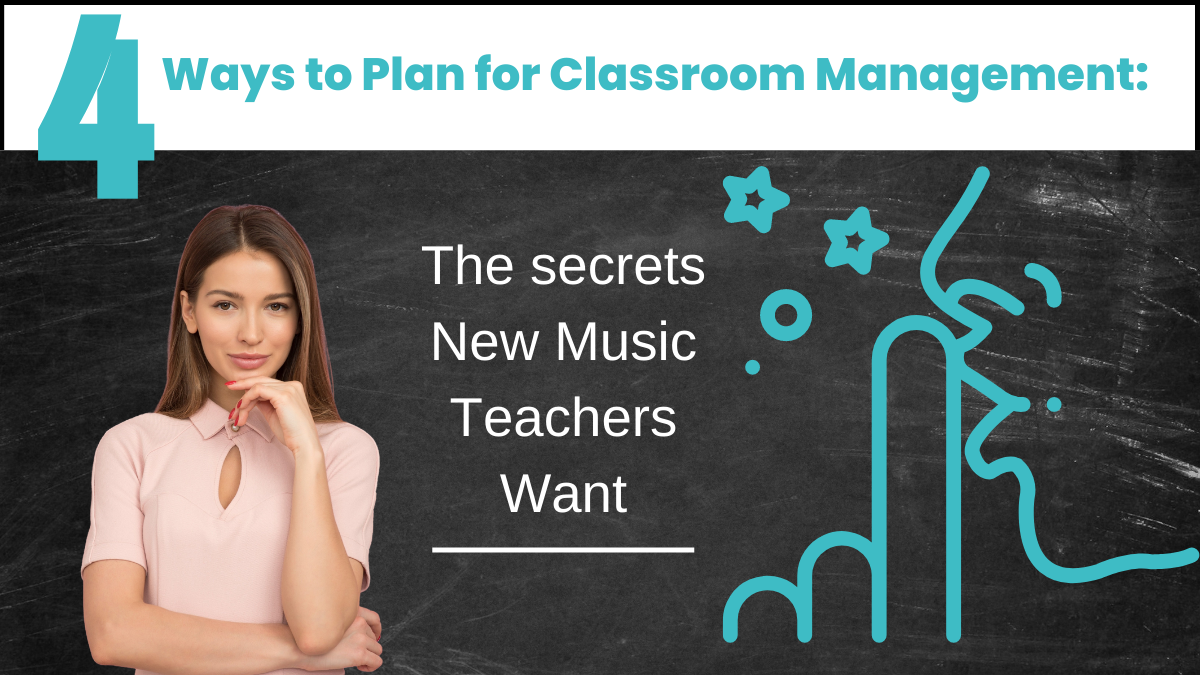
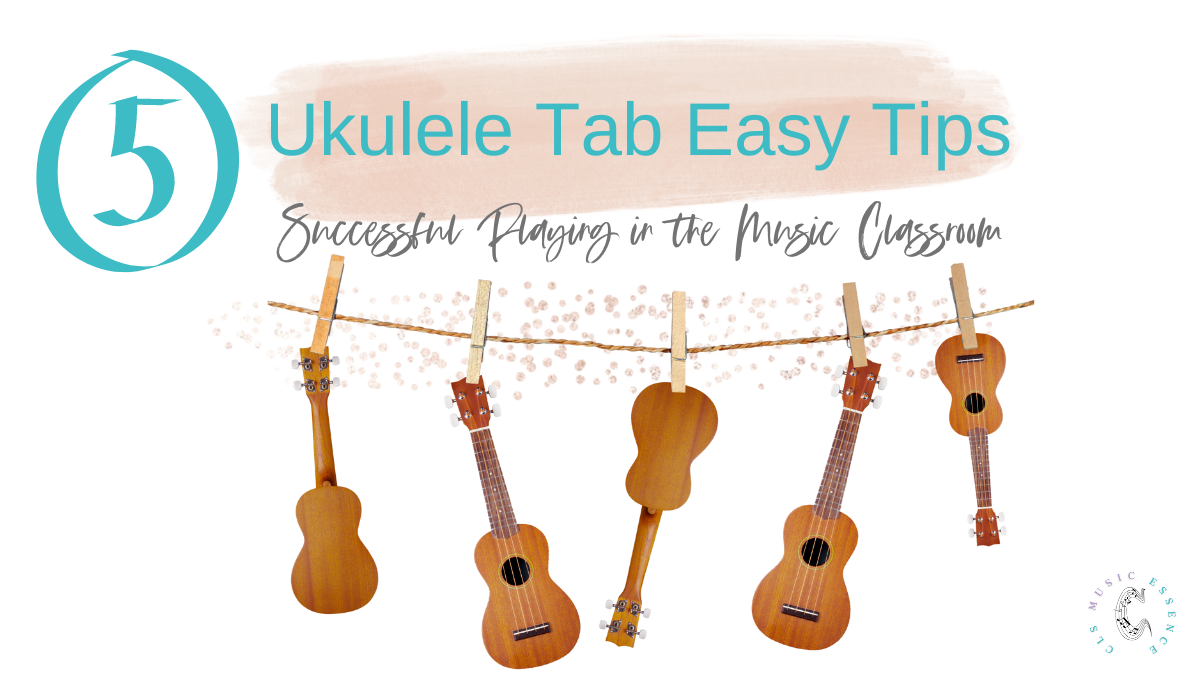

One Comment